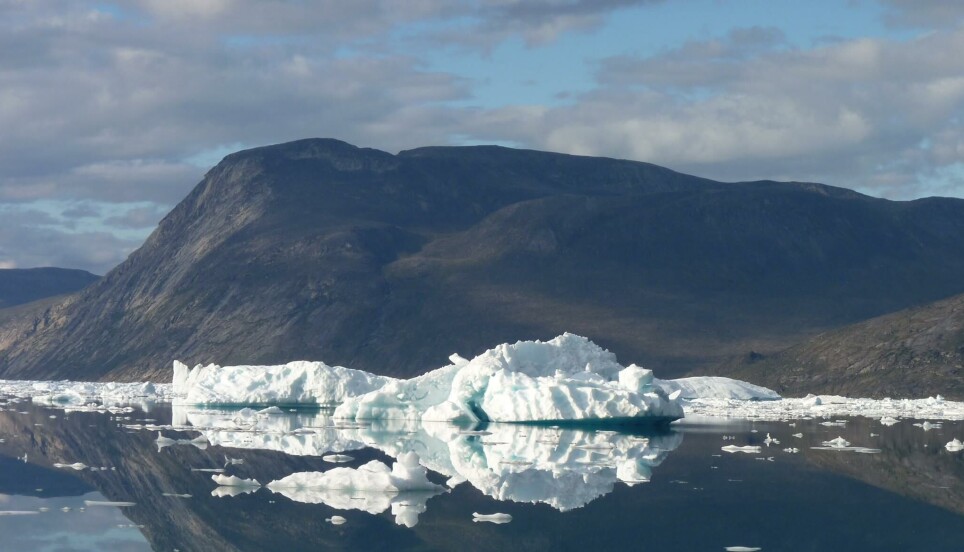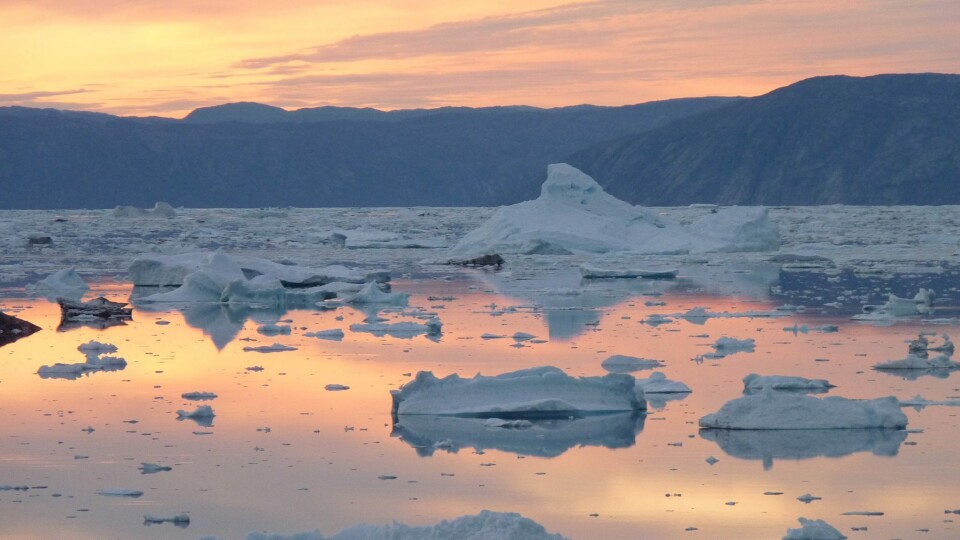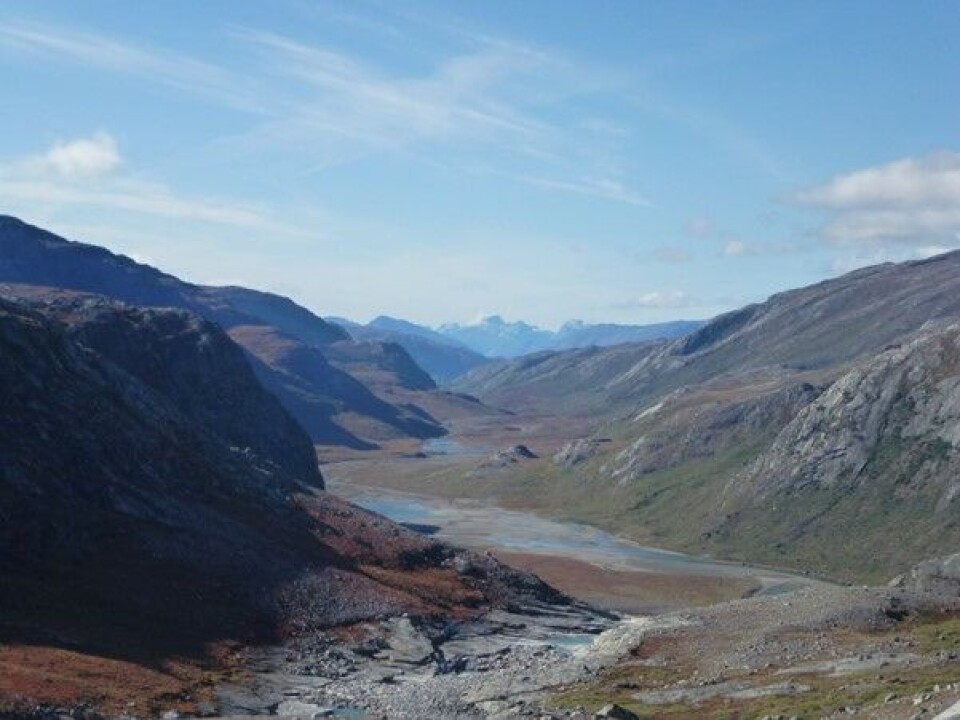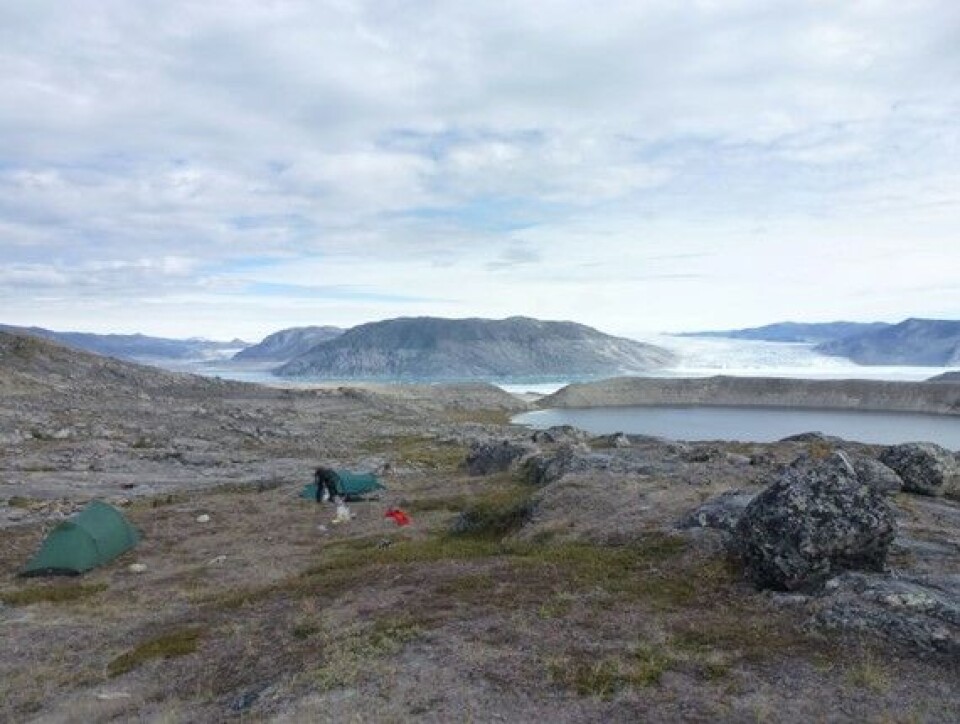THIS ARTICLE/PRESS RELEASE IS PAID FOR AND PRESENTED BY the Norwegian University of Life Sciences (NMBU) - read more

When global climate chills, glaciers speed up
A reconstruction of the history of one of Greenland’s major glaciers show that the ice advanced rapidly in the past when climate was colder.
Glaciers are important indicators of climate change. As global climate is shifting, the glaciers’ physical changes, such as growth, reduction and physical distribution provide scientists with measurable evidence of changes in temperature and precipitation. New research findings indicate that one of Greenland’s major glaciers advanced rapidly in periods when the global climate was much cooler.

World’s second largest ice mass?
The Greenland ice sheet is the second largest ice body in the world, and it has the potential to contribute significantly to global sea-level rise in a warming global climate.
“Understanding the long-term record of the Greenland ice sheet, including both records of glacial advance and retreat, is critical in validating approaches that model future ice-sheet scenarios,” Associate Professor Danni Pearce at the Norwegian University of Life Sciences (NMBU) says.
Pearce and her colleagues have studied the advance of Kangiata Nunaata Sermia (KNS) – one of the largest tidewater glaciers in southwest Greenland.
Differing from glaciers that are strictly on land, tidewater glaciers extend and flow all the way to the ocean or the sea. There they can calve and break up into icebergs.
What happens when it gets colder?
Nowadays, media outlets are usually reporting gloomy news stories on glacial retreat. Pearce comments that this is natural, given the current climate situation.
“We are in a warming climate scenario, and therefore we scientists generally document ice masses retreating," she says.
However, historically, global climate has alternated between warmer and colder periods.
“To get the complete picture, we need to know how glaciers react if there is a climate cooling and any subsequent glacier advance. To do this, we need to reconstruct glacier geometry from the past,” she explains.

Complicated puzzle
Reconstructing the advance of glaciers can be very difficult, because the glacier typically destroys or reworks everything in its path as it advances forward. The research team undertook multiple field seasons in Greenland, traveling on foot to remote sites. Many had not been visited since the 1930s, all with the aim of trying to uncover the record of KNS-glacier’s advance.
Grows at the same pace
The research team found that during the 12th and 13th centuries CE, the KNS-glacier advanced at least 15km, at a rate of approximately 115 metres per year. This advancement is comparable to modern rates of glacial retreat observed over the past 200 years.
“This indicates that when climate is cooler, glaciers can advance equally as fast as they are currently retreating,” Pearce explains.
The glacier reached its maximum extent by 1761 CE during the Little Ice Age, culminating in a total advance of circa 20 km. Since then, it has retreated about 23 km to its present position.

On the locals’ doorstep
The period when the glacier was advancing coincided with when the Norse were present in Greenland. Sometime during the 10th century, Icelandic Vikings settled on Greenland’s southwestern coast. Their descendants, commonly referred to as “the Norse”, inhabitated the area for about 500 years, before disappearing sometime around 1450-1500.
Prior to its maximum extent during the Little Ice Age, the researchers found that the glacier advanced to a location within only 5 km of a Norse farmstead.
“Even though the glacier was rapidly advancing down the fjord, it did not seem to affect the Norse, which we found unusual,” Pearce says.

Vastly different landscape in the past
At this moment in time, the fjord is completely filled with icebergs, making boat access challenging.
“We know from historical record that it has been like this for the last 200 years while the glacier has been retreating," Pearce says.
That would have made life very impractical for the Norse. Why did not the glacier and its icebergs force them to relocate? The team pondered about the surrounding environment and the amount of iceberg production in the fjord during that time.
However, for the KNS-glacier to advance at 115 metres per year, it would need to retain its ice and could not have been producing a lot of icebergs.
“So we actually think that the fjord would have looked very different from today. Fewer icebergs, which possibly allowed the Norse far more easy access to this site for farming, hunting, and fishing,” Pearce comments.
“Our research shows that climate cooling can change iceberg calving behavior and drive glacier advance at rates just as rapid as current retreat. It also shows how resilient the Greenlandic Norse were to the changing environmental conditions. Such adaptation can give us hope for the changes we may face over the coming century," she concludes.
Reference:
Pearce et al. 'Greenland tidewater glacier advanced rapidly during era of Norse Settlement', Geology, vol. 50, 2022. DOI: 10.1130/G49644.1 Abstract.
See more content from NMBU:
-
We're eating more cashew nuts – and the consequences are serious
-
Do young people with immigrant parents have better health?
-
Who’s picking your strawberries this summer?
-
Can coffee grounds and eggshells be turned into fuel?
-
Rising housing costs fuel inequality in Norway
-
Researchers warn: Climate change in African mountains has a greater impact than previously thought





































